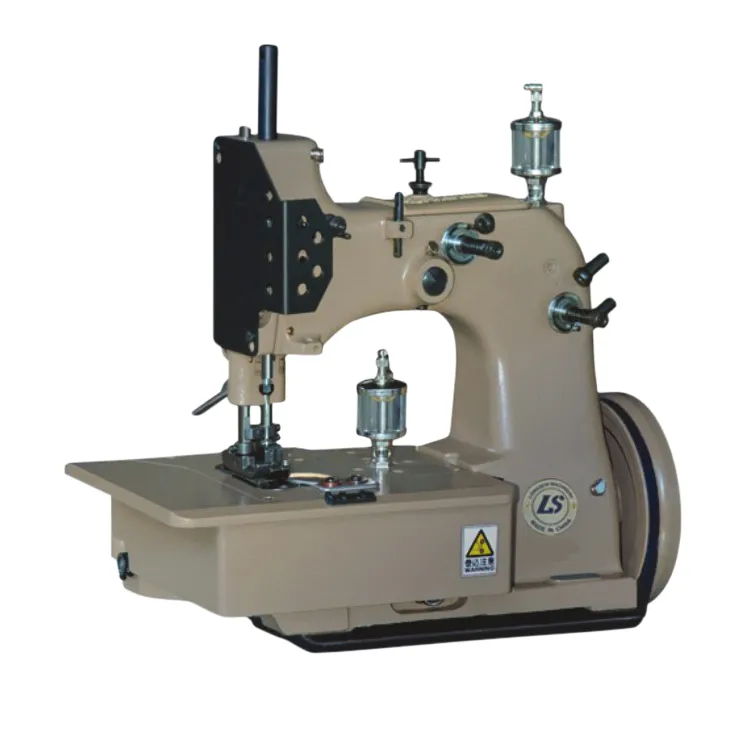CNC-Driven Pattern Sewing Machines for Precision Fabrication and Design
CNC Pattern Sewing Machines Revolutionizing the Textile Industry
In the realm of textile manufacturing, the pursuit of efficiency, precision, and innovation has led to the development of advanced technologies. One of the standout advancements in this sector is the CNC (Computer Numerical Control) pattern sewing machine. This sophisticated piece of equipment integrates traditional sewing with cutting-edge computer technology, offering a myriad of benefits that are reshaping how garments and textile products are designed and produced.
What is a CNC Pattern Sewing Machine?
A CNC pattern sewing machine is a sewing device controlled by a computer system, allowing for precise movements and an ability to execute complex sewing patterns with minimal human intervention. This technology uses software to dictate the machine's actions, ensuring that every stitch is executed flawlessly and allowing for intricate designs that would be practically impossible to achieve with manual sewing methods.
The Benefits of CNC Pattern Sewing Machines
1. Precision and Consistency One of the most significant advantages of CNC pattern sewing machines is their unparalleled precision. Every stitch is executed with exactitude, which is crucial when working with complex patterns or when consistency across multiple garments is key. This precision reduces fabric waste and ensures that the final product meets the exact specifications of designers.
2. Speed and Efficiency In a world where time is of the essence, CNC pattern sewing machines drastically increase the speed of production. These machines can operate continuously, sewing at a pace that far exceeds what human labor can achieve. As a result, manufacturers can meet tight deadlines and respond more readily to market demands.
3. Versatility CNC pattern sewing machines can handle a wide range of materials and patterns. From delicate fabrics like silk and lace to sturdier materials such as denim and canvas, these machines adapt to different sewing requirements. Additionally, they can program a variety of patterns, giving designers the freedom to experiment with new designs without the worry of investing too much time in manual adjustments.
cnc pattern sewing machine

4. Reduction in Labor Costs By automating the sewing process, CNC machines reduce the need for manual labor, which can lead to significant savings in labor costs. While initial investments in CNC technology may be high, the long-term savings and increased output often outweigh these costs, making it an attractive option for manufacturers.
5. Enhanced Design Capabilities With advanced software integration, designers can create intricate patterns and shapes that can be directly fed into the CNC machine. This level of design freedom means that companies can innovate faster, responding to trends quickly and efficiently.
6. Improved Quality Control CNC pattern sewing machines come equipped with advanced monitoring systems that ensure each stitch is correct and fabric is handled properly throughout the sewing process. This quality control reduces defects and returns, leading to higher customer satisfaction and better brand reputation.
Challenges and Considerations
While the benefits of CNC pattern sewing machines are compelling, there are challenges and considerations that businesses must take into account. The initial cost of purchasing and setting up these machines can be substantial. Additionally, training staff to operate and maintain CNC technology is essential, as a lack of skilled labor can hinder the seamless integration of these machines into production processes.
Looking Ahead
As the textile industry continues to evolve, the role of CNC pattern sewing machines will become increasingly significant. Innovations in software and machine capabilities will likely further enhance their efficiency and effectiveness. Moreover, as sustainability becomes more important, these machines can play a role in reducing waste through more efficient fabric usage and precise cutting.
In conclusion, CNC pattern sewing machines represent a transformative force in the textile manufacturing landscape. They enable greater precision, speed, and efficiency, making them an essential tool for any forward-thinking manufacturer. With ongoing technological advancements, the future of sewing may very well belong to CNC machines, paving the way for a new era of creativity and productivity in the textile industry. As we look ahead, embracing these innovations will be key for businesses seeking to thrive in a competitive market.
-
Boost Production Efficiency with a Pattern Sewing MachineNewsAug.29,2025
-
Industrial Excellence with the Best Heavy Duty Sewing MachineNewsAug.29,2025
-
Precision and Power with the Best Pattern Sewing MachineNewsAug.29,2025
-
Reliable Bulk Packaging Starts With the Right FIBC Sewing MachineNewsAug.29,2025
-
Advanced Packaging Solutions: Elevate Productivity with Jumbo Bag Sewing Machine and Industrial Stitching EquipmentNewsAug.29,2025
-
High-Performance Solutions for Bulk Packaging: FIBC Sewing Machine and MoreNewsAug.29,2025
-
Maximize Efficiency with an Industrial Cylinder Arm Sewing MachineNewsAug.28,2025


























